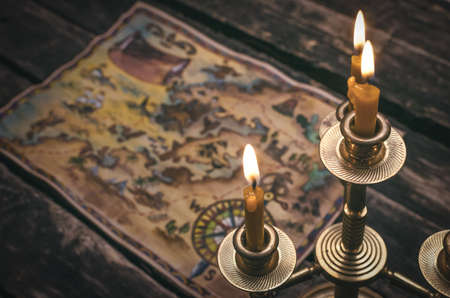1. Introduction: British Fascination with Palmistry
In the UK, palmistry—often referred to as chiromancy—has long held a curious place in the national imagination, weaving together threads of superstition, entertainment, and genuine intrigue. From the bustling piers of Blackpool to the quaint village fetes scattered across the countryside, palm readers have been a familiar sight for generations. Their booths, festooned with mysterious symbols and promises of insight into one’s future or inner self, attract both sceptics and believers alike. British media too, from classic radio programmes to modern television shows, often depict palmistry as a whimsical yet alluring pastime—a cultural touchstone that bridges the gap between tradition and novelty. This fascination is not merely confined to nostalgia; it speaks to a broader curiosity about what our hands might reveal about who we are, especially within a society that delights in the interplay between rational evidence and enduring folklore.
2. Roots of Palmistry in British Folklore
Palmistry, or chiromancy, has long been entwined with the rich tapestry of British folklore. While its earliest origins can be traced to ancient India and Egypt, the art found fertile ground in Britain’s myth-laden landscape, evolving through centuries of superstition and storytelling. By the Middle Ages, palm reading was woven into village life—often carried out by wise women, travellers, or so-called cunning folk who interpreted palms during fairs and market days.
Key Moments in British Palmistry
| Era | Event/Belief | Cultural Influence |
|---|---|---|
| Tudor Period | Palmistry referenced in literature and court entertainment; Henry VIII’s court hosted palm readers. | Royal fascination with the occult |
| Victorian Era | Palm reading boomed as a parlour game among the upper class; linked to spiritualism. | Rise of pseudoscience and mysticism |
| Modern Day | Palmistry persists at fairs and festivals; seen in local legends and popular media. | Nostalgia and cultural heritage |
The Language of Lore: Palms in Popular Tales
Classic British tales often feature seers who predict fate from a glance at someone’s hand. In Scottish ballads or English countryside stories, a curved heart line might foretell romance, while a broken life line could spell misfortune. These motifs became shorthand for personality and destiny in oral tradition—a kind of social shorthand that still echoes today.
Palmistry and Regional Superstitions
Across the UK, regional variations coloured interpretations: Welsh folklore linked long fingers to poetic souls; Cornish myths warned of “witches’ marks” on the palm. Through these beliefs, palmistry became less about fortune-telling and more about understanding character—a tool for navigating social relationships in tight-knit communities.
A Living Tradition?
While modern scepticism challenges old superstitions, palmistry’s roots remain visible in British culture. Whether as a party curiosity or a genuine belief passed down through generations, the practice reflects an enduring fascination with reading personality through physical signs—a blend of evidence, myth, and storytelling unique to these isles.

3. Scientific Scrutiny: What Does the Evidence Say?
From a psychological and scientific standpoint, the idea that palm reading can genuinely reveal one’s personality is highly contested. While palmistry has long captivated the British public, with high street psychics and countryside fairs offering readings, mainstream psychology in the UK remains sceptical. Most psychologists argue that there is no credible evidence linking the lines or shapes of our palms to our character traits or life outcomes. Instead, research suggests that people tend to seek patterns and meaning—a phenomenon known as apophenia—especially when it comes to interpreting ambiguous information such as palm lines.
Scientific studies have repeatedly failed to find any consistent correlation between palm features and psychological profiles. In fact, controlled experiments show that palm readings are often influenced by the “Barnum effect,” where individuals believe vague or general statements apply specifically to them. This effect is especially potent in Britain, where politeness and a tendency towards introspection may make people more receptive to flattering or hopeful interpretations. Furthermore, neuroscientists point out that personality is shaped by a complex interplay of genetics, upbringing, and environment—not by physical characteristics of the hand.
Nevertheless, some proponents of palmistry cite anecdotal examples or point to cultural traditions as supporting evidence. However, these claims rarely stand up under rigorous scrutiny. British universities rarely include palmistry in their curriculums outside of courses on folklore or pseudoscience, further emphasising its lack of scientific credibility. Ultimately, while palm reading remains a popular pastime and conversation starter in the UK, science advises caution: there is currently no robust evidence to support the notion that your fate or personality can be read from your palms.
4. Contemporary Practice: From Pubs to Parlours
If you stroll through a typical British high street or browse the events calendar at your local community centre, you might be surprised by the enduring presence of palmistry in modern UK society. Far from being relegated to the annals of Victorian curiosity, the art of reading palms has found fresh ground in both traditional and unexpected settings. Today, palmistry is as likely to appear on the entertainment roster at a bustling pub quiz night as it is in the plush parlours of alternative wellness centres.
Let’s take a closer look at where and how palmistry is practised across the UK:
| Setting | Description | Typical Audience |
|---|---|---|
| Pubs & Festivals | Palm readers set up informal stalls during themed nights or local fairs, offering quick readings for entertainment and social interaction. | Younger adults, groups seeking novelty experiences, sceptics and believers alike |
| Private Parlours & Wellness Centres | Professional practitioners provide in-depth sessions focused on self-discovery and personal growth, often blending palmistry with other holistic therapies. | Wellness seekers, spiritual enthusiasts, those curious about alternative practices |
| Online Platforms | Remote readings via video calls or written reports are growing in popularity, especially among younger, tech-savvy Brits. | Digital natives, remote clients, people exploring spirituality from home |
| Corporate Events & Hen Parties | Palmists are sometimes hired as quirky icebreakers or conversation starters during team-building events or celebrations. | Diverse adult audiences, event organisers seeking unique experiences |
The British approach to palmistry is coloured by a healthy dose of irony and wit. While some view it with genuine curiosity—hoping for insights into their character or destiny—others treat it as playful banter or an excuse for a bit of fun. This duality is reflected in the language people use: phrases like “take it with a pinch of salt” or “just for a laugh” frequently accompany palm readings. At the same time, there remains a niche but steadfast community that takes these readings seriously, integrating them into broader spiritual or personal development journeys.
Interestingly, contemporary British palmists often blend tradition with modern sensibilities. Many offer disclaimers about the entertainment value of their craft, yet subtly acknowledge its deeper resonance for those who seek meaning beyond the material. The result is an atmosphere where open-minded scepticism coexists with pockets of sincere belief—an attitude quintessentially British in its balance between cynicism and curiosity.
5. Palmists’ Perspectives: Insights from UK Readers
To truly understand the enduring allure of palmistry in Britain, it’s essential to hear from those who practise it firsthand. Across the UK, palmists—whether found in bustling London markets, quaint Cornish towns, or at festivals in Manchester—bring unique perspectives shaped by local culture and personal belief. Many British palm readers view the hand as a map, with each line and shape offering clues not just to one’s fate but also to their innate character traits. According to seasoned palmist Angela Fox from Brighton, “The heart line isn’t just about love; it often reveals how people relate emotionally to others, whether they’re guarded or open-hearted.” Such interpretations go beyond fortune-telling and focus on personality nuances.
For most UK palmists, the reading process is highly interactive. They often start by asking clients about their lives, using these conversations as context for what they observe in the hand. This approach reflects a broader British scepticism—few practitioners claim absolute certainty. Instead, as Scottish reader Tom McGregor notes, “We’re here to offer guidance and prompt self-reflection rather than make bold predictions.” Many UK palmists see themselves as facilitators of introspection rather than seers of destiny.
When it comes to the question of whether palms truly reveal personality, opinions among British palmists are nuanced. Some, like London-based Sonia Patel, blend tradition with psychology: “I see patterns in hands that often match my client’s temperament, but I always remind them that hands change over time—just as people do.” Others stress that palmistry is as much about storytelling and building rapport as it is about decoding physical features.
Interestingly, several UK readers draw upon folklore but reinterpret it through a modern lens. For instance, tales of the ‘simian line’ once sparked superstitions about bad luck; today’s palmists might discuss its association with intense focus or strong-willed personalities instead. The blending of old beliefs with contemporary understanding is part of what keeps palmistry culturally relevant across Britain.
Ultimately, while there’s no scientific consensus among UK palmists that hands can definitively reveal personality, many believe there’s value in the ritual itself. As one reader put it during a Bristol community event, “Whether you see it as art or insight, the real magic happens when people feel seen and understood—even if only for a moment.” This gentle balancing act between evidence and folklore is what gives British palmistry its distinctive charm.
6. Cultural Resonance: Why Do Brits Still Care?
Despite living in an age of scientific scepticism and rational inquiry, palmistry continues to hold a peculiar yet persistent presence within British culture. But what keeps this centuries-old practice alive in the UK, even as its origins remain tangled between folklore and pseudoscience? The answer lies not only in tradition but also in the deeper social needs it satisfies.
The Role of Community
Palm readings are rarely a solitary affair. Whether at local fairs, seaside towns, or trendy pop-up events in London, Brits often encounter palmists as part of communal gatherings. These sessions offer more than entertainment—they foster moments of connection and shared curiosity. In a society that sometimes feels atomised, such rituals can help reinforce local bonds and create a sense of belonging, even if only fleetingly.
Identity and British Folklore
The UK’s rich tapestry of myth and legend has long woven together elements of the mystical with everyday life. From Stonehenge to Arthurian lore, the British imagination is no stranger to the arcane. Palmistry taps into this heritage, serving as a playful yet meaningful nod to the country’s folkloric roots. For many, having their palm read is a way to engage with history—both personal and national—while playfully questioning what it means to be “typically British.”
Escapism and Everyday Life
In an era marked by uncertainty and relentless digital noise, it’s perhaps unsurprising that Brits might seek comfort in the reassuring narratives offered by palmistry. The act of turning one’s hand over to a reader is, on some level, an exercise in escapism—a brief detour from routine anxieties into a world where destiny feels tangible and life’s puzzles seem momentarily solvable. Whether taken seriously or approached with tongue firmly in cheek, palmistry provides an imaginative respite that modern science rarely affords.
Ultimately, the endurance of palmistry in Britain says as much about cultural psychology as it does about ancient superstitions. It endures not because everyone believes it reveals personality truths, but because it continues to fulfil timeless human desires for connection, identity, and wonder—even amidst the grey drizzle of British reality.
7. Conclusion: Between Reason and Romance
The British relationship with palmistry is a fascinating dance between the rational and the romantic—a legacy shaped by centuries of folklore, Victorian curiosity, and a modern appetite for scientific evidence. In today’s UK, palmistry persists in the cultural imagination not just as an oddity or party trick, but as a reflection of our ongoing fascination with what lies beneath the surface. While academic research consistently finds little credible link between the lines on our palms and our personalities, the enduring appeal of palm reading remains undeniable.
Why does this tradition continue to thrive in Britain, despite a national reputation for scepticism? Perhaps it speaks to something deeper in the British psyche: a delight in storytelling, a love for the mystical edges of daily life, and an openness to exploring identity through unconventional means. Palmistry, in many ways, offers both comfort and intrigue—it gives people language to narrate their inner worlds, even if that narrative is more poetic than empirical.
This ongoing push and pull between evidence and folklore has allowed palmistry to evolve rather than disappear. Contemporary British attitudes often blend healthy doubt with playful engagement; one might consult a palmist at a summer festival or village fete, all the while maintaining an ironic distance. Others seek out palm readings during periods of uncertainty, finding solace in symbolic interpretations when logic alone feels inadequate.
Ultimately, whether we approach palmistry as a curious artefact of British folk culture or as a living practice imbued with personal meaning, its endurance reflects our collective willingness to inhabit spaces where reason meets romance. In that liminal zone—between proof and possibility—British palmistry continues to flourish, inviting each new generation to trace their own stories across their hands.


